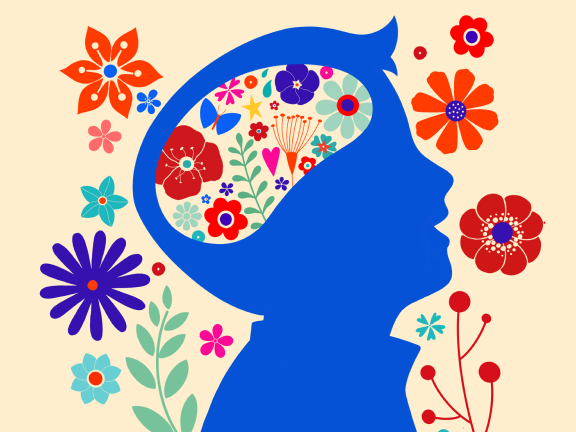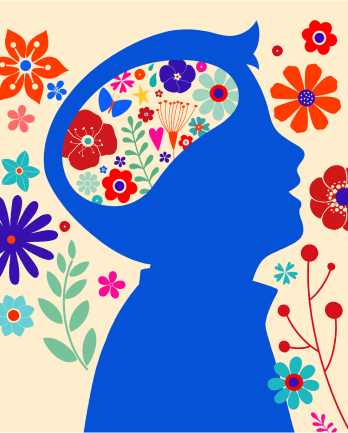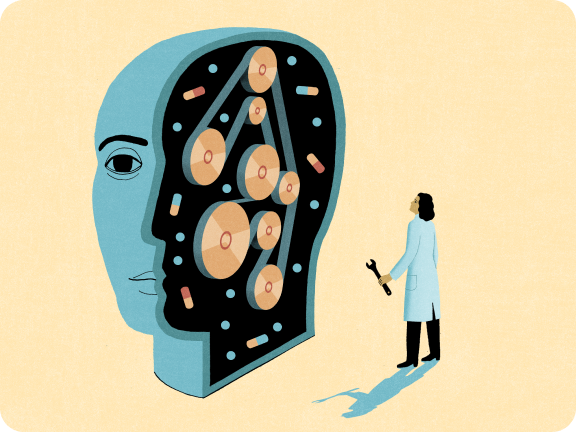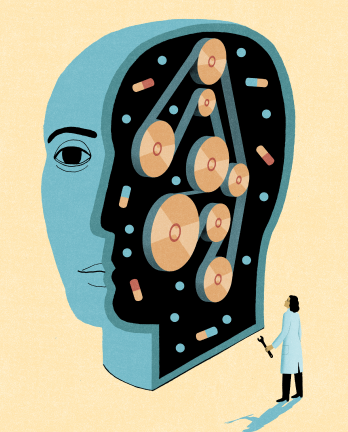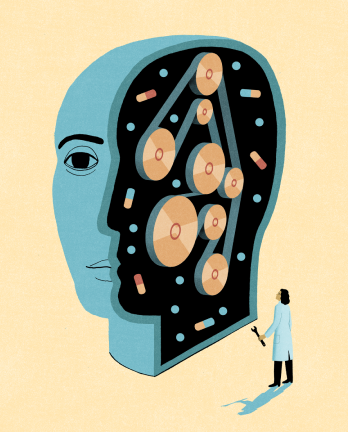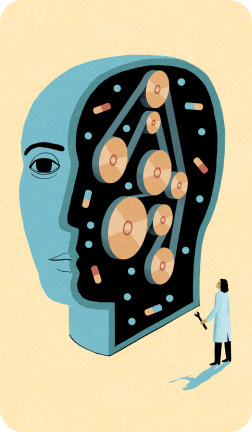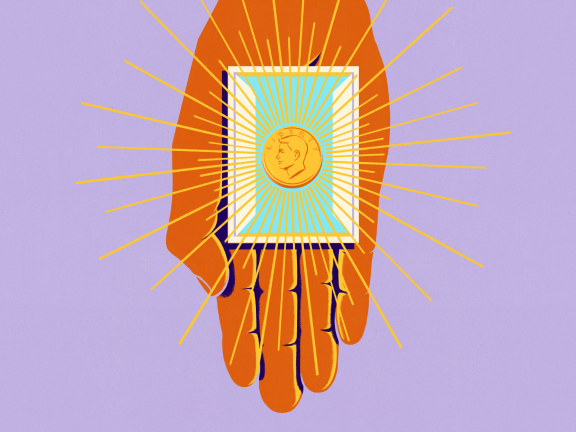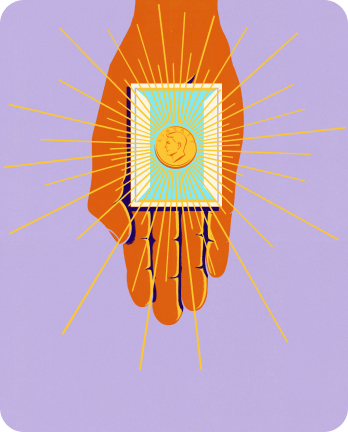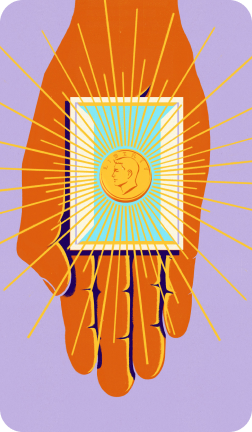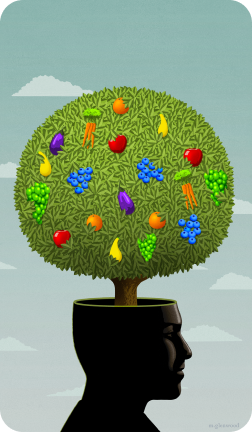Partner Content
This content was paid for by Jefferson Enterprise and created by INQStudio. The news and editorial staffs of The Inquirer had no role in this article’s creation.
This content was paid for by Jefferson Enterprise and created by INQStudio. The news and editorial staffs of The Inquirer had no role in this article’s creation.
The digital age conflicts with our need for movement, creating a clash between our biology and modern life.
The digital age conflicts with our need for movement, creating a clash between our biology and modern life.
The digital age conflicts with our need for movement, creating a clash between our biology and modern life.
The digital age conflicts with our need for movement, creating a clash between our biology and modern life.
hen faced with an insult, cut off in traffic, or dissed on the job, will walking it off help you make the better choice between acting out and exhibiting self-control?
Science says it will. Regular movement provides us with the presence of mind we need to take a pause and rationally discuss a stressful moment. Research has discovered that exerting your muscles actually changes the chemistry in your brain and helps soothe anxiety, boost your mood, spark creative problem-solving, and promote calm.
The disciplines of exercise and physical training can also build empathy and social skills. Just by moving more, we can restore our equilibrium and change our fates.
Born to Run
Humans are made to move, and once upon a time, our very survival depended on it. Ancient hunter-gatherers would walk about eight miles a day, or around 17,000 steps, to find food and shelter.
But as a result of the conveniences brought about by modern design, technology, and ingenious human resourcefulness, today most of us are much more sedentary. The spread-out, low-density development that characterizes our suburbs and public transportation within our more dense cities discourage physical activity. Escalators make it possible to glide up stairs without moving our feet, while cars make it possible to travel with the tap of an ignition button and a gentle press on the gas.
Meanwhile, one Centers for Disease Control and Prevention survey revealed that perception of neighborhood safety is a determinant of physical activity—the less safe you feel, the less exercise you’ll get.
It’s all adding up, as are the negative effects. Lack of exercise chips away at our physical health and also deprives us of one of the most natural ways to cope with stress—through movement. Our more sedentary lifestyle, intensified by the endless at-home entertainment options offered on our personal devices, contributes to the deterioration of both our mental and physical health.
Today, many of us take just 5,000 steps or less daily, or about one-third of the physical activity our bodies are built for. More than 80% of adults are not meeting the weekly minimum level of physical activity (150 minutes of moderate aerobic activity, plus two sessions of strength training) recommended by the CDC.
If movement soothes and calms us, sitting for hours on end each day makes us feel caged, and given the right (or wrong) set of stressful circumstances, we’re more likely to fight our way out.
Movement Mends the Mind
“The [blood] circulation to the brain is the main reason exercise improves brain function. More blood flowing to the brain improves not just mood but also memory and cognitive function and helps people learn and multitask better,” says Travis Pollen, assistant professor of exercise science at Thomas Jefferson University. “You name it, and exercise helps directly and indirectly.”
Perhaps the best part is that it doesn’t take a lot of movement to reap the brain-soothing rewards. “You don’t even need to do that much to begin to feel the benefits, which kick in as quickly as 10 minutes into a session,” explains Stephen Thomas, chair of the exercise science department at Thomas Jefferson University.
Within about 10 minutes of starting to exercise, the brain releases endorphins, organic chemicals that act as the body’s natural painkillers to reduce the pain of exertion and, in the process, allow you to feel calmer, even elated.
The enhanced blood circulation in the brain also causes other changes. “The hippocampus will enlarge and activate, and that is the source for memory and learning,” Thomas says. “This enlargement prompts the brain to make new connections to other parts of the cerebral cortex.”

Stephen Thomas
Chair, Exercise Science Department, Thomas Jefferson University
Exercises that don’t require a lot of thinking, such as running or walking, let you shut your brain off from the tasks of the day, “allowing new connections to fire, activating the part of the brain responsible for memory and learning, and sparking your ability to learn, think, plan, and conjure new ideas,” according to Thomas.
There’s also a behavioral component. When we begin a practice of physical activity such as walking, swimming, cycling, or training for a team sport, the discipline of showing up—even if just for ourselves—promotes social skills, empathy, and self-efficacy and allows us to eventually more readily use our brains to get out of sticky situations without resorting to aggression.



The Lasting Effect of Exercise
“Studies have shown that exercise works as well as medication to treat depression and anxiety,” says Pollen. “This isn’t to say that if you are medicated for depression or anxiety you can skip taking your drugs,” he quickly adds. When we exercise, endorphins and endocannabinoids, both substances that transmit signals between nerve cells, go to work on the opioid system, the brain’s reward area. They act as feel-good molecules that relax you and lower cortisol, the primary stress hormone.
These anti-stress agents hang around for up to 24 hours, making it possible for the brain to benefit from a workout long after the sneakers are off. The result: You feel better, calmer, and more in control for the rest of the day.
Over time, the exercised brain is conditioned to respond to stress with a lower cortisol spike, paving the way for a calm and constructive reaction, studies have shown. Science suggests that regular moderate-to-hard exercise generates endorphins, serotonin, and norepinephrine, anti-stress hormones we need to problem solve and avoid conflict in the first place.
After a workout, you may even experience a sense of inspiration and feel newly able to solve problems or push through creative or mental blocks. Because exercise promotes the creation of new brain cells and strengthens synaptic connections—communication links between the brain’s neurons—your brain is able to find new solutions to problems that may have previously seemed insurmountable.
On top of that, the discipline of daily training and competition improves self-efficacy and self control and reduces aggressive behavior, according to a study that looked at the impact of boxing on aggression.
And in a study on the effects of weight training on aggression among incarcerated adult men, all measures of aggression were lower in the group that weight trained regularly than in the group that was not physically active. “Verbal aggression, hostility, and anger significantly decreased in the weight-training group … Results offer some support to the belief that engaging in weight training, or at least engaging in voluntary physical activity, may have an effect on reducing inmate aggression levels,” the authors of the study concluded.
Moving Against Modern Stasis
Regular movement profoundly impacts our ability to manage stress and navigate conflict, but our society is organized in a way that makes an active lifestyle increasingly elusive. The good news: Innovative programs are providing motivation and encouragement to get people moving.
Some organizations are focusing on community-driven physical activity. These initiatives integrate movement into daily life, creating opportunities that are accessible, enjoyable, and can easily fit into adults’ busy schedules.

More blood flowing to the brain improves not just mood but also memory and helps people learn and multitask better.”
Travis Pollen
Assistant Professor of Exercise Science, Thomas Jefferson University
In 2020, according to the CDC, just 54% of children ages six to 17 played organized sports. Kids from low-income families participated even less, with the lowest-income kids enjoying less than half the rate of sports participation than the highest-income kids. The cost of nonschool youth sports leagues has become increasingly prohibitive, with 59% of U.S. families calling those costs a strain on their household finances. A long-term objective set by the Department of Health and Human Services in 2019 is aiming for 63.3% of students engaged in sports by 2030. However, economic disparities continue to hinder progress in attaining this goal.
Investment in bike paths, greenways, and parks might be expensive, but it’s a countermeasure to the rising health costs of movement-deprived communities.
These hopeful innovations provide practical models for intentional investment in programs and communities to encourage more active lifestyles. In a world increasingly dominated by sedentary lifestyles and influenced by technology, we must remember that our bodies—and minds—are wired for movement. Regular physical activity is not just about maintaining physical health; it’s also a powerful tool for enhancing mental well-being and fostering the resilience we need to deal with stressful times.
The next time you’re faced with a stressful situation or a challenging day, remember that taking a walk, going for a run, or engaging in any form of physical activity can be your pathway to resilience, clarity, and composure.
Illustrations by Andrea De Santis


LUCY DANZIGER is a journalist and the former editor-in-chief of Self magazine. She is also the former editorial director of The Beet, a guide to plant-based healthy living. She has been writing about health, brain science, and wellness for the past 20 years. This content was paid for by Jefferson Enterprise and created by INQStudio. The news and editorial staffs of The Inquirer had no role in this article’s creation.
Home of Sidney Kimmel Medical College
















